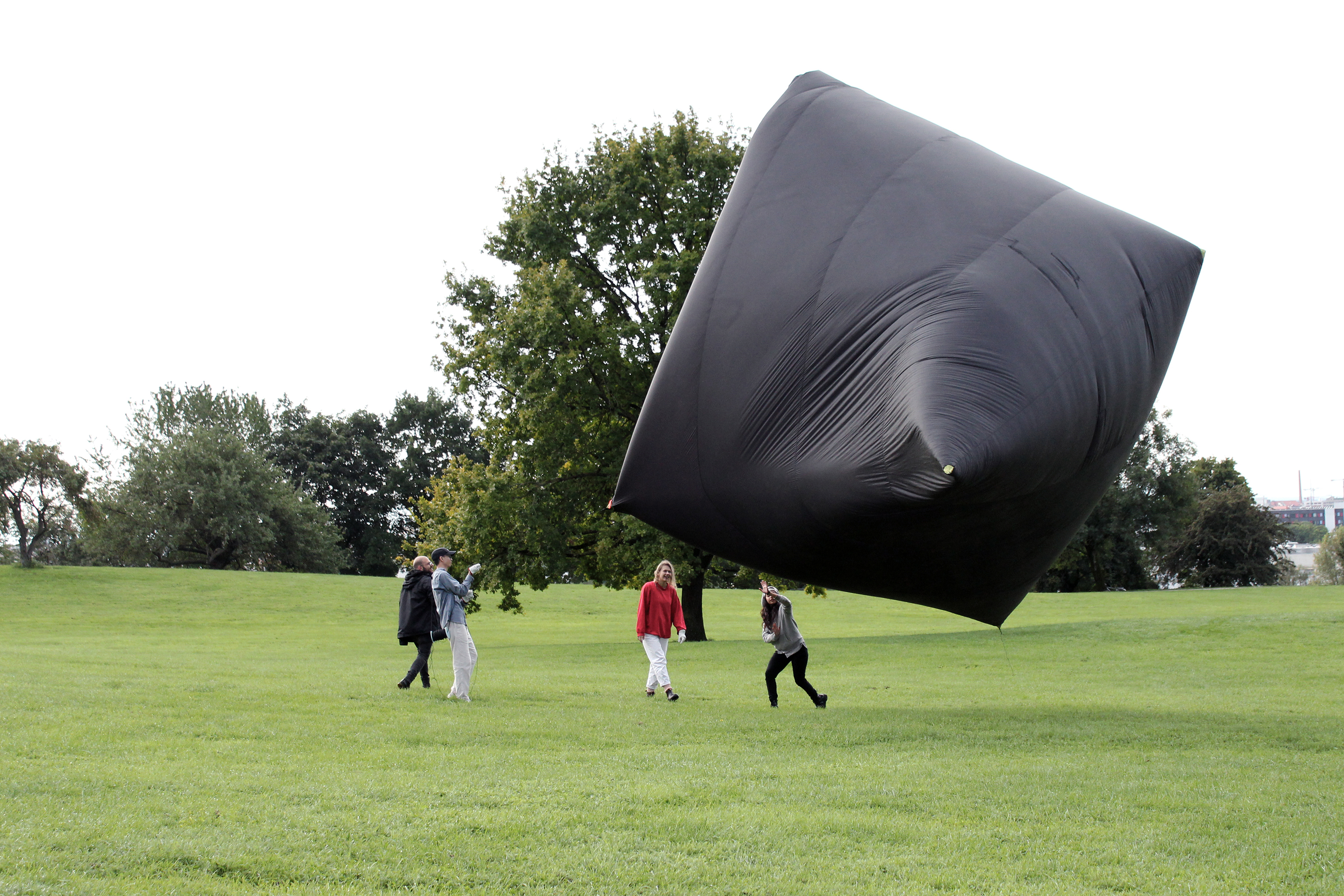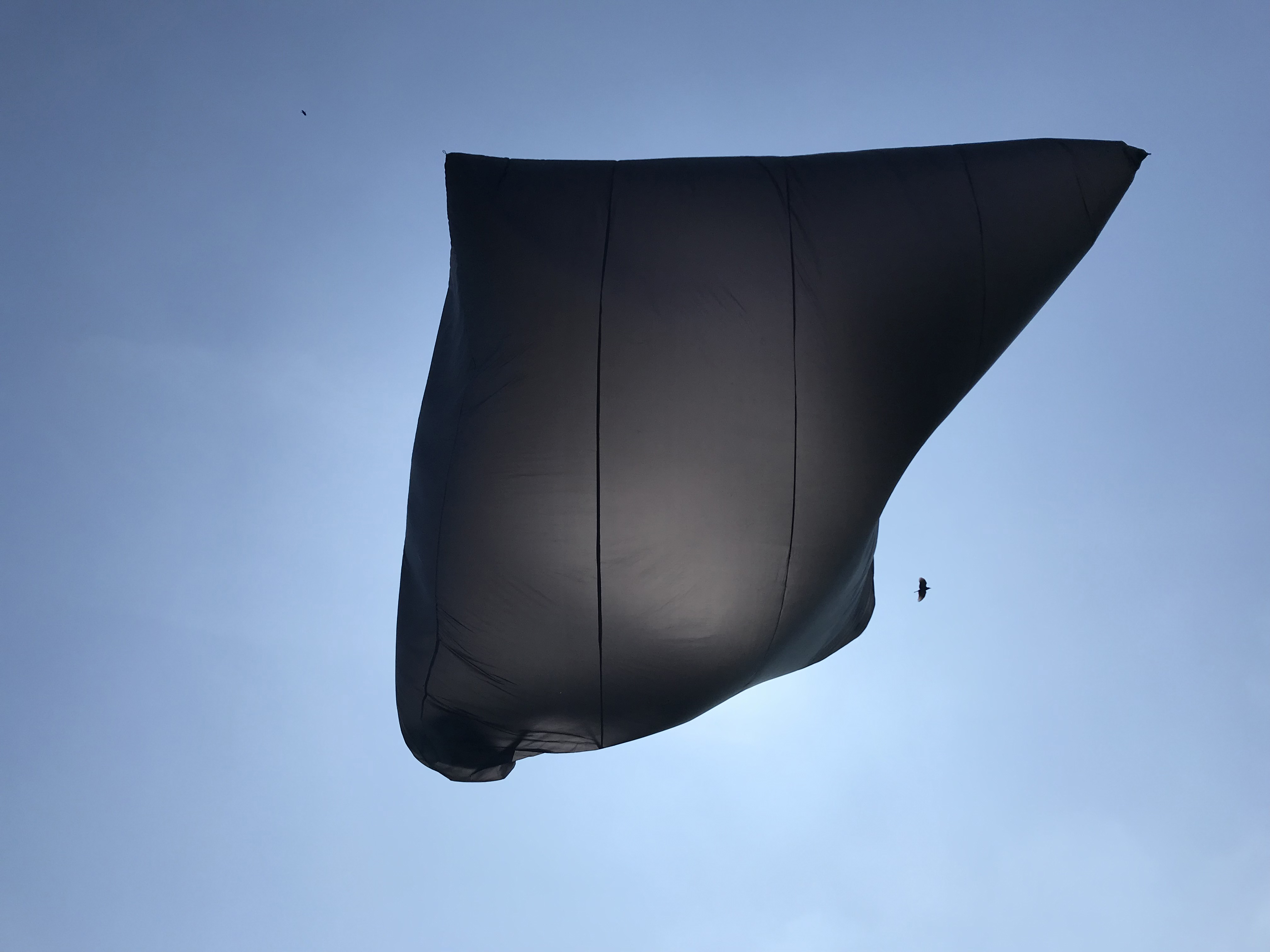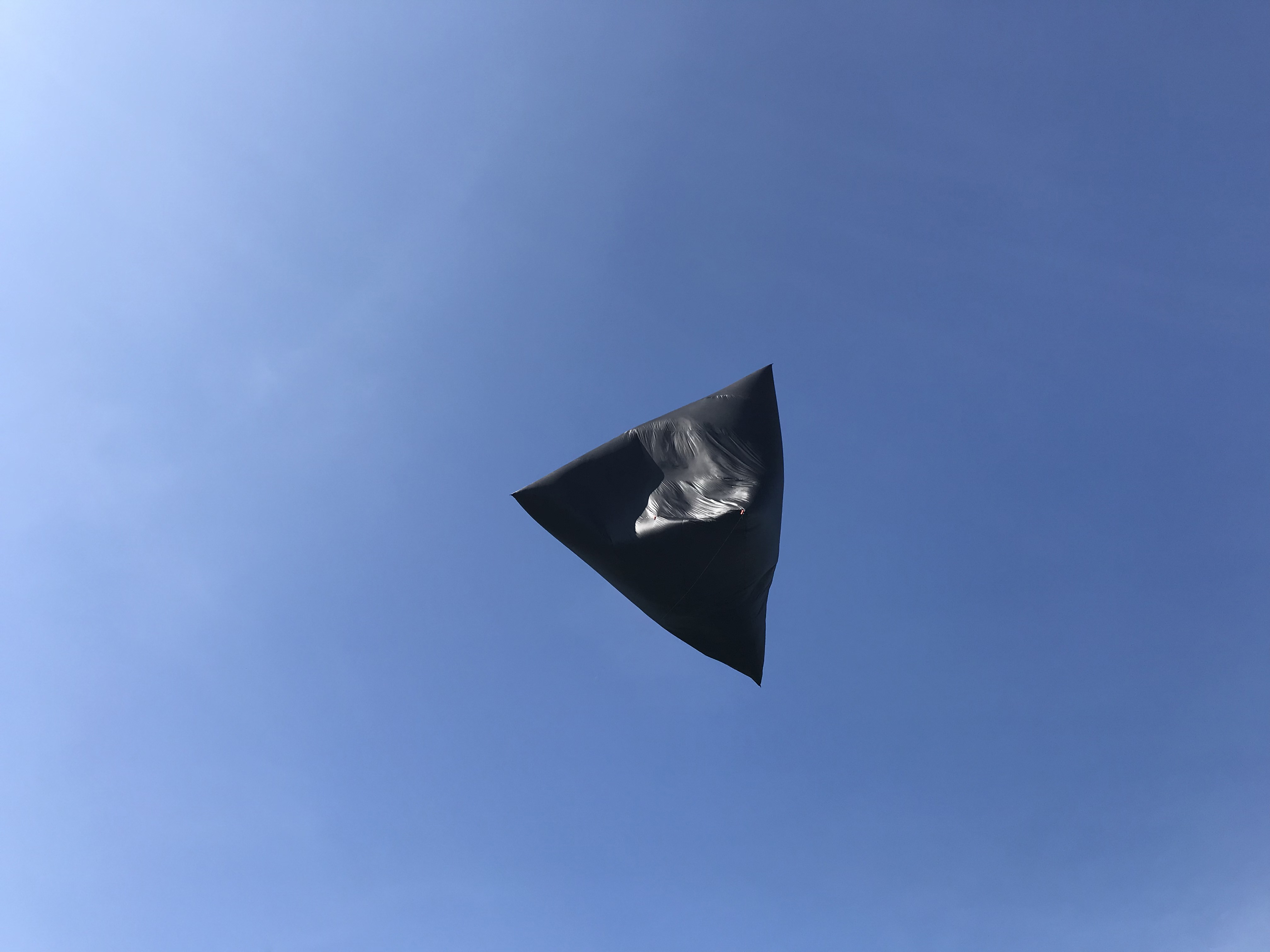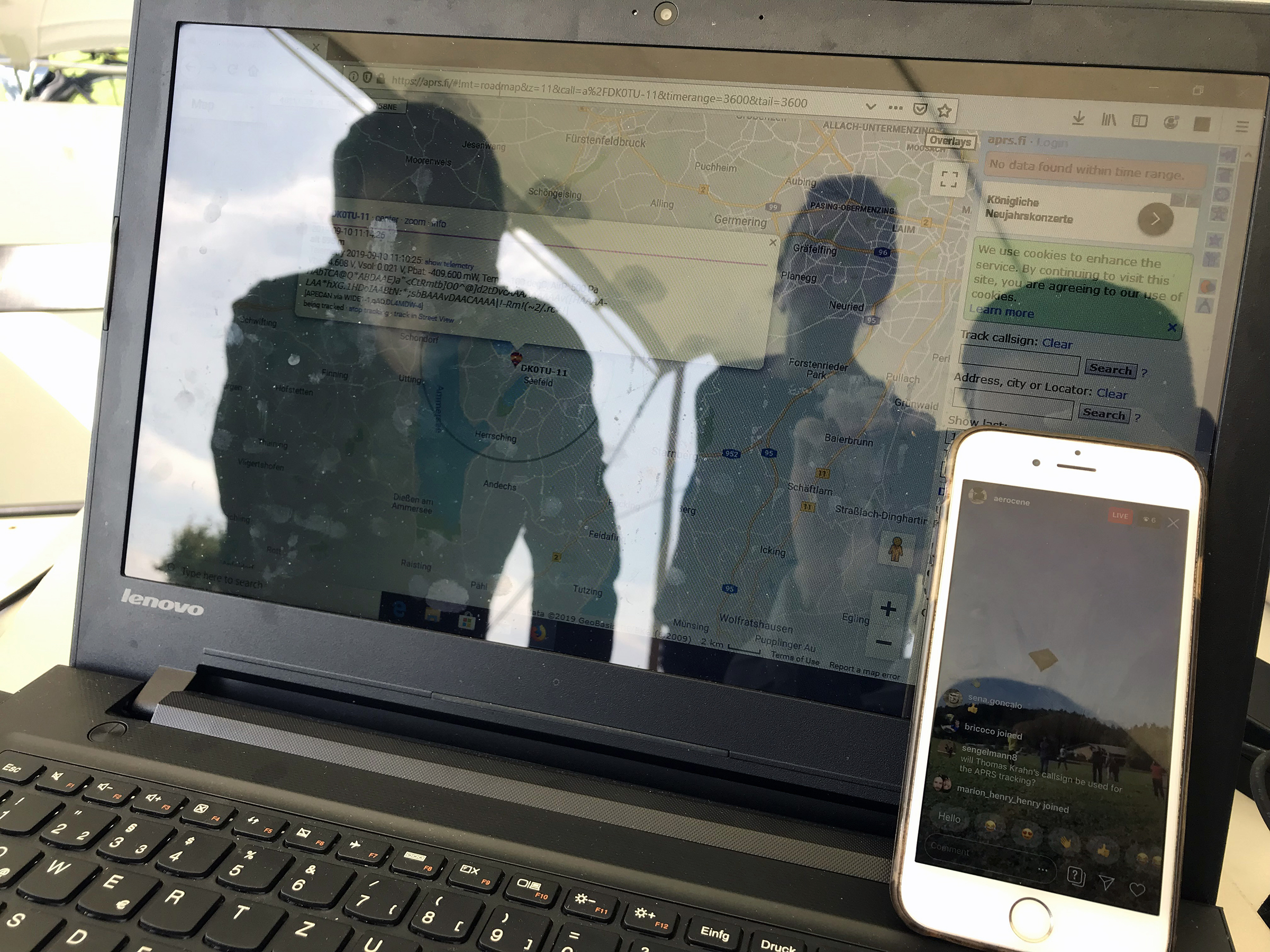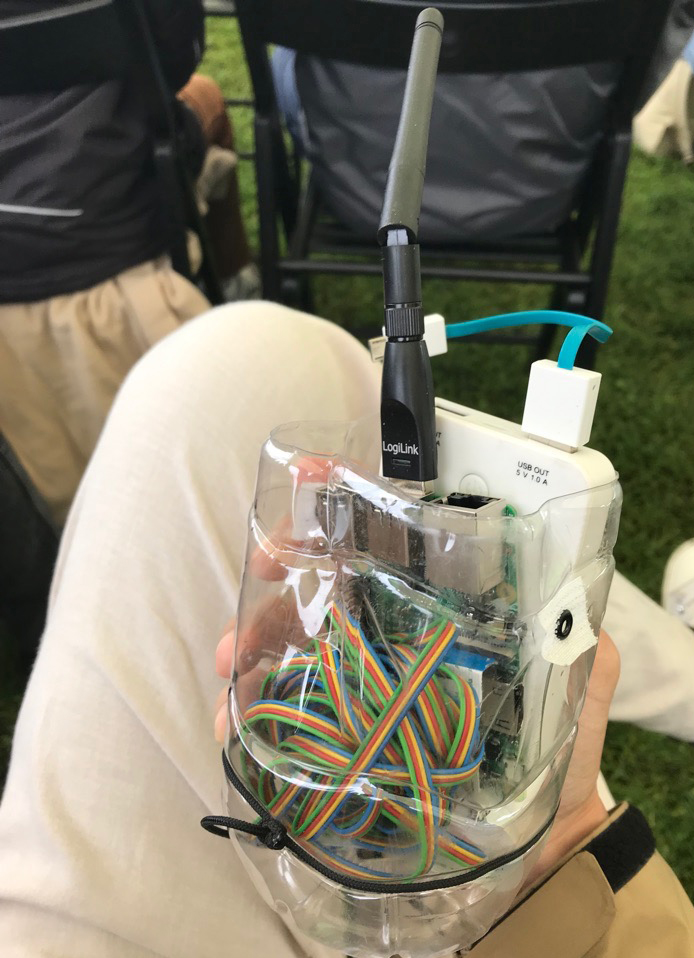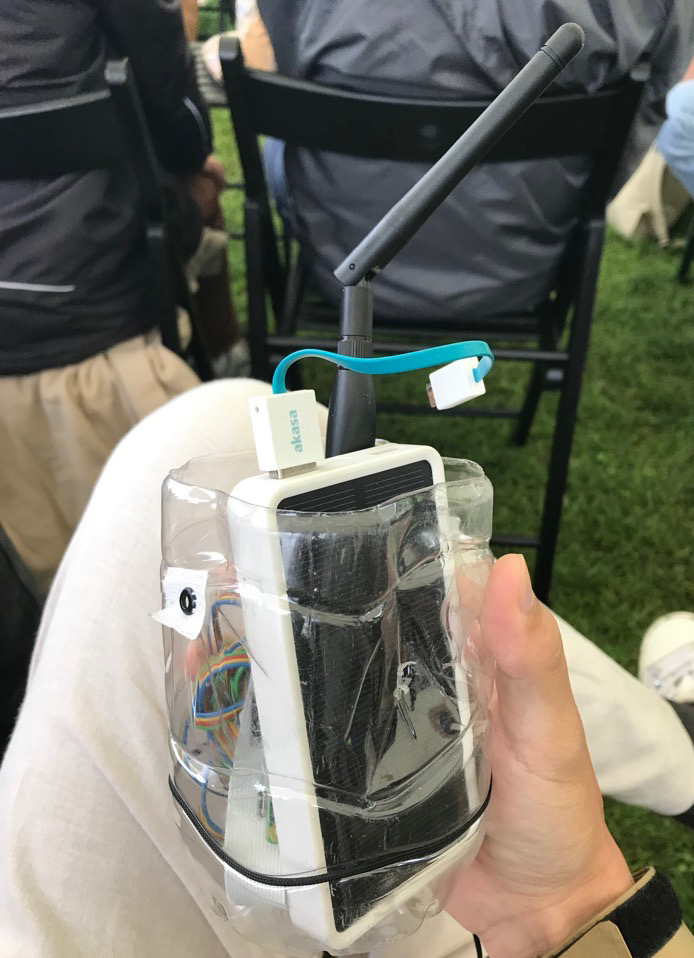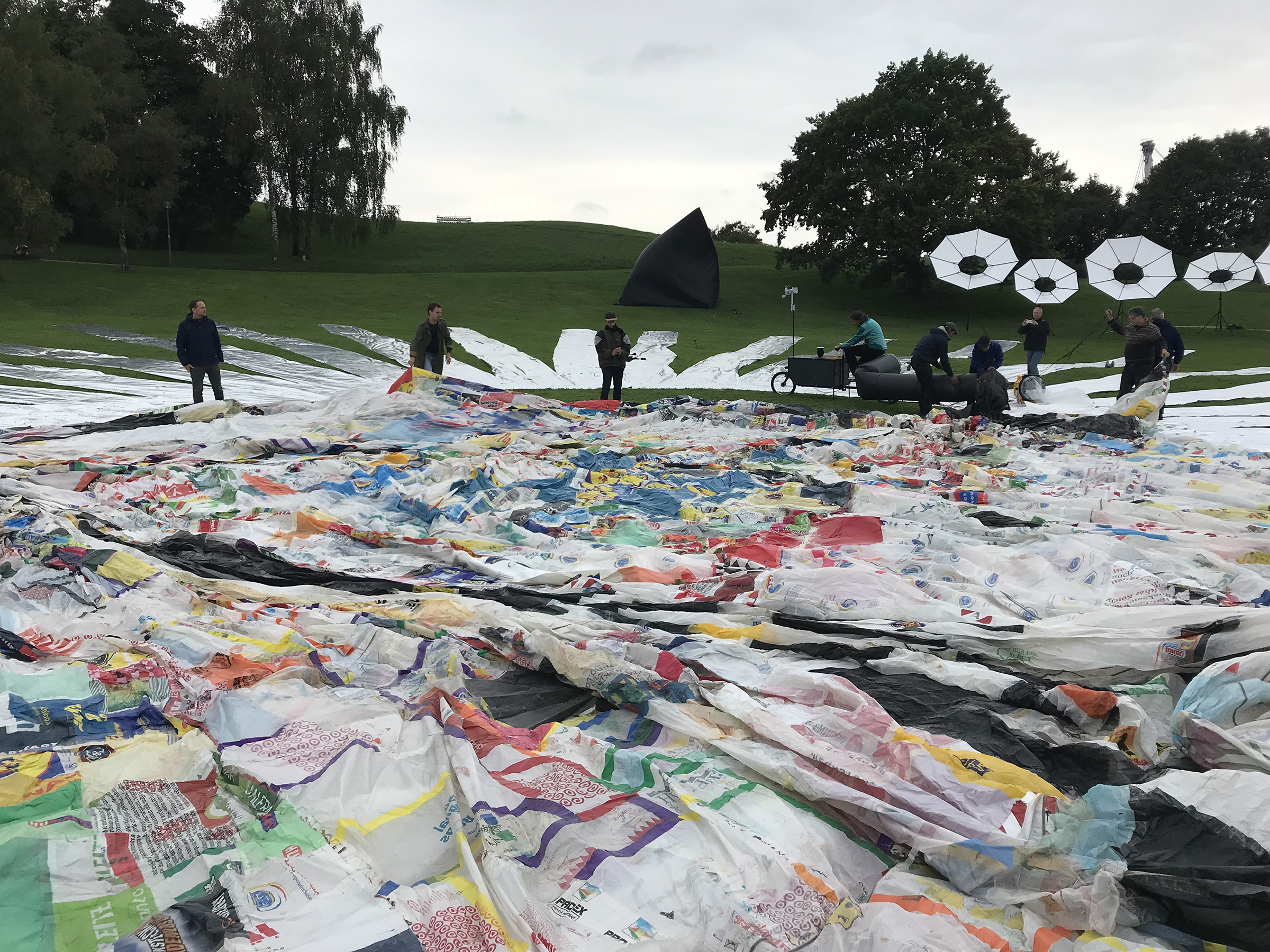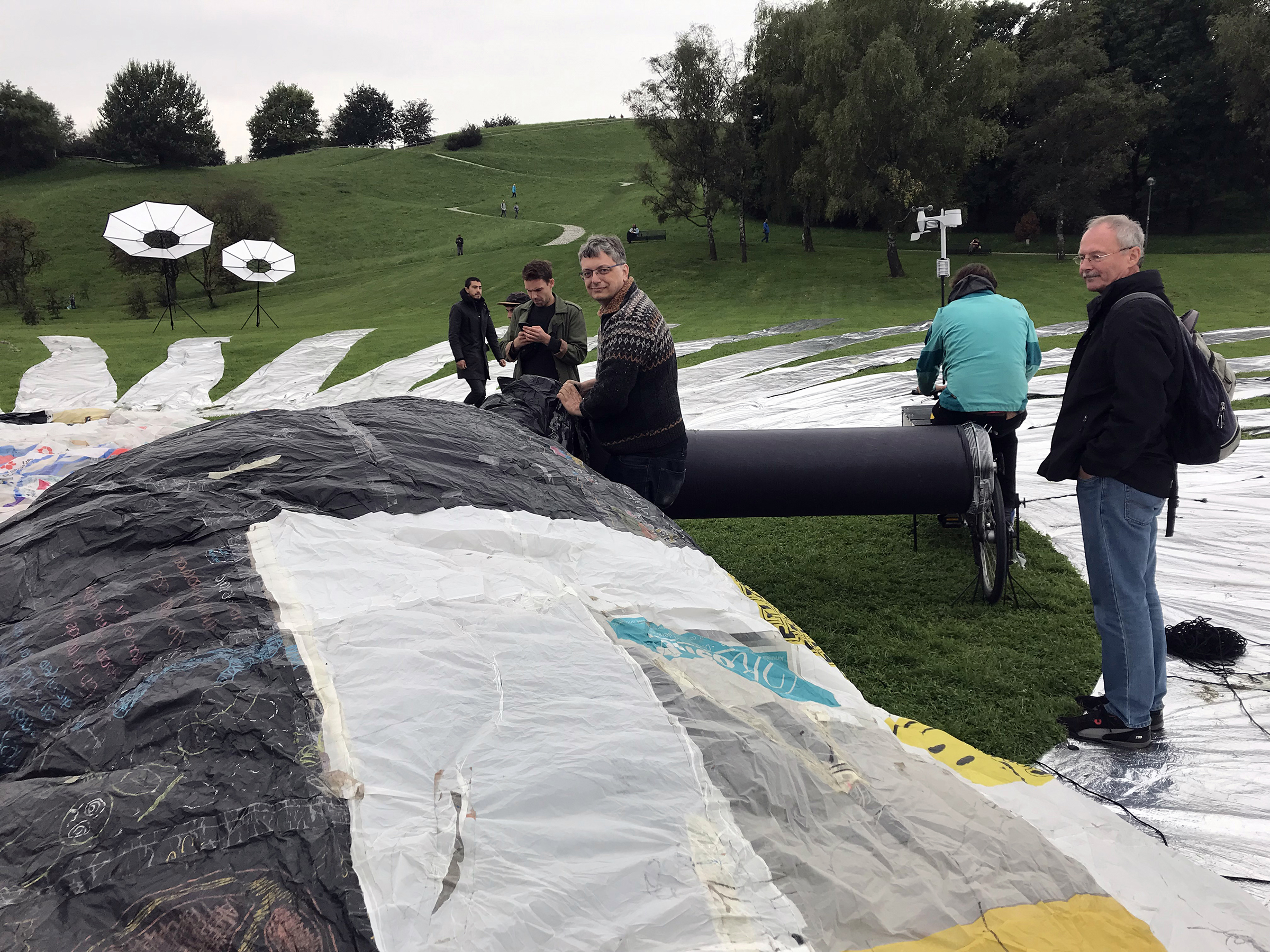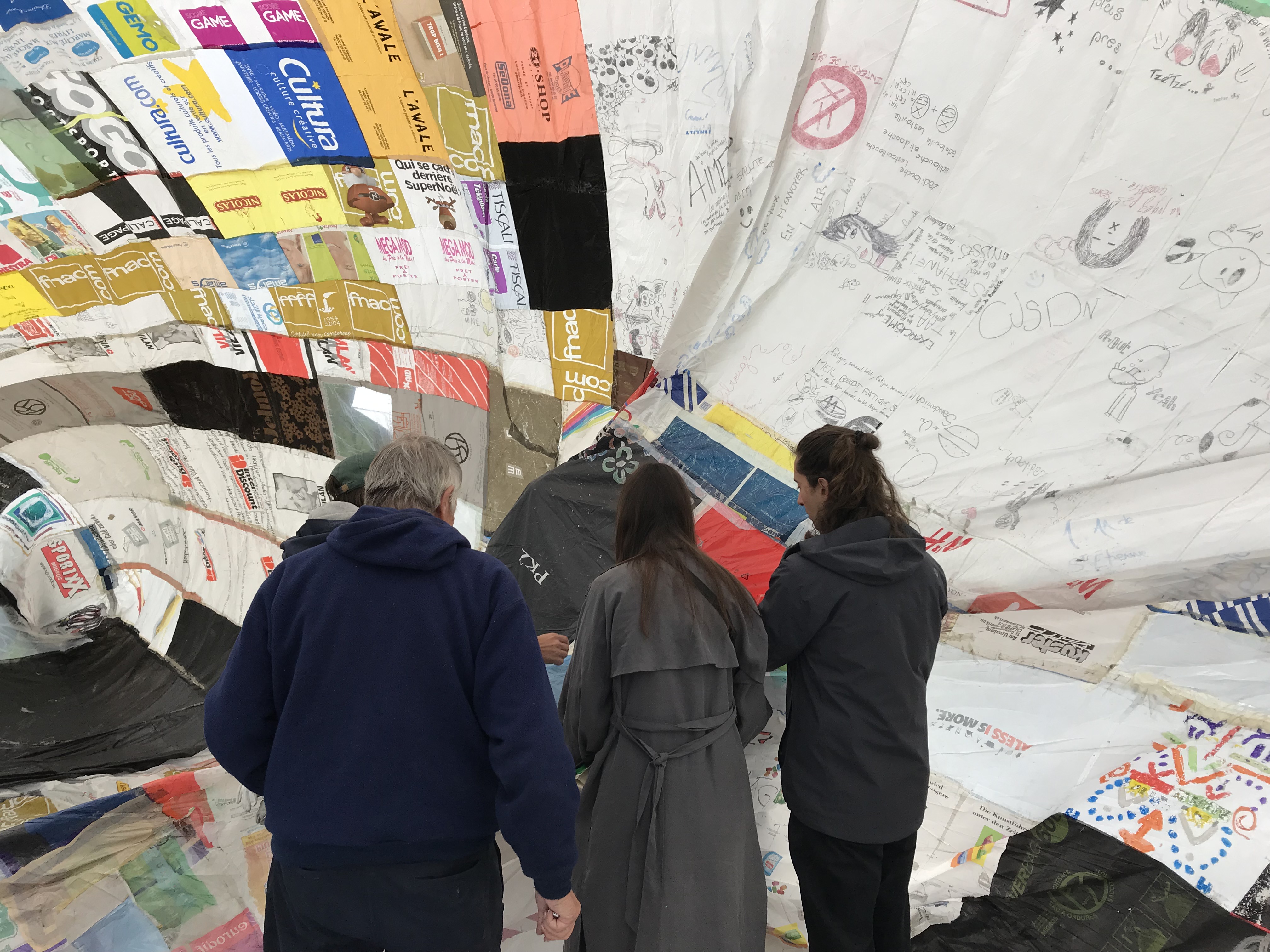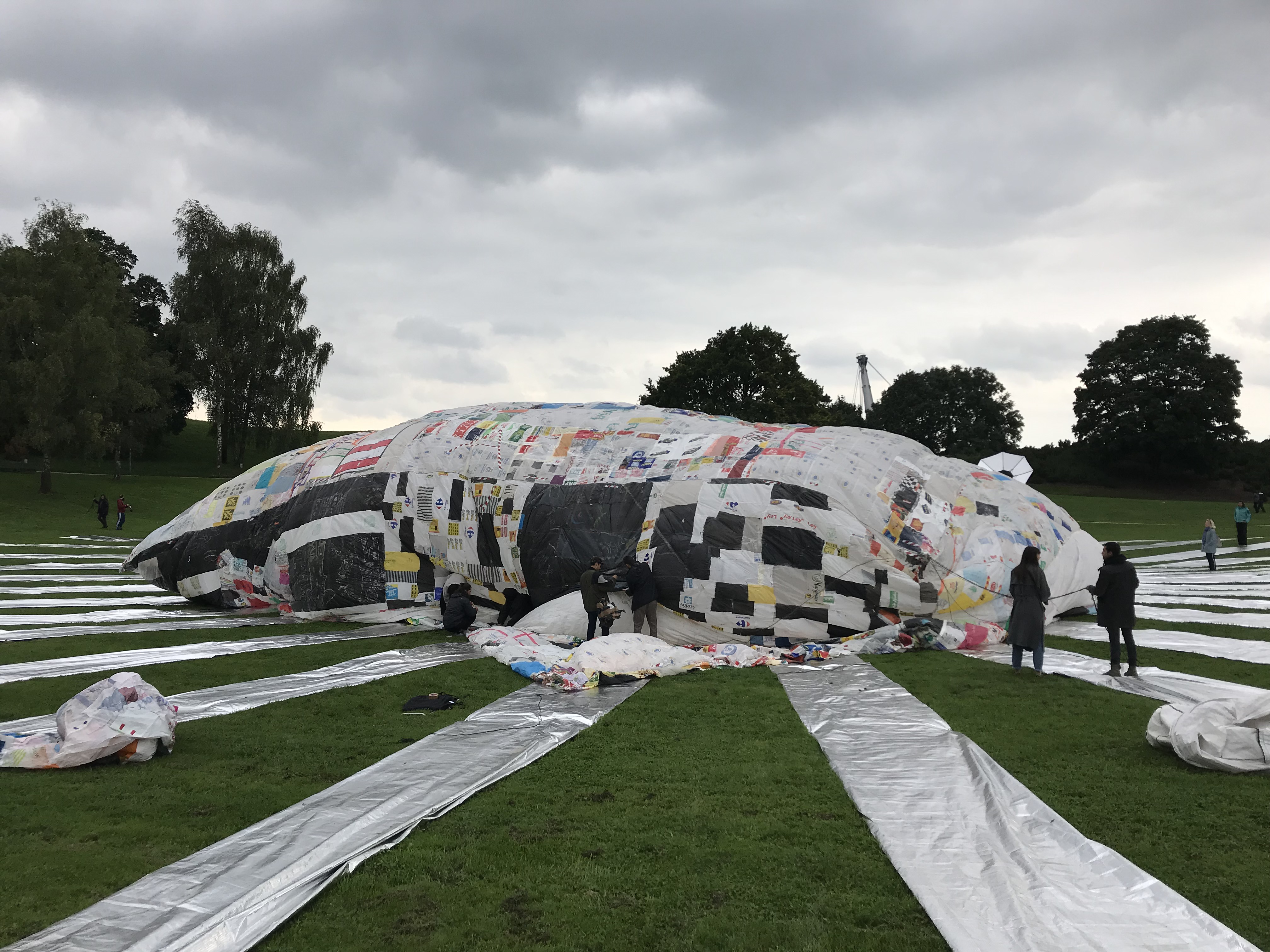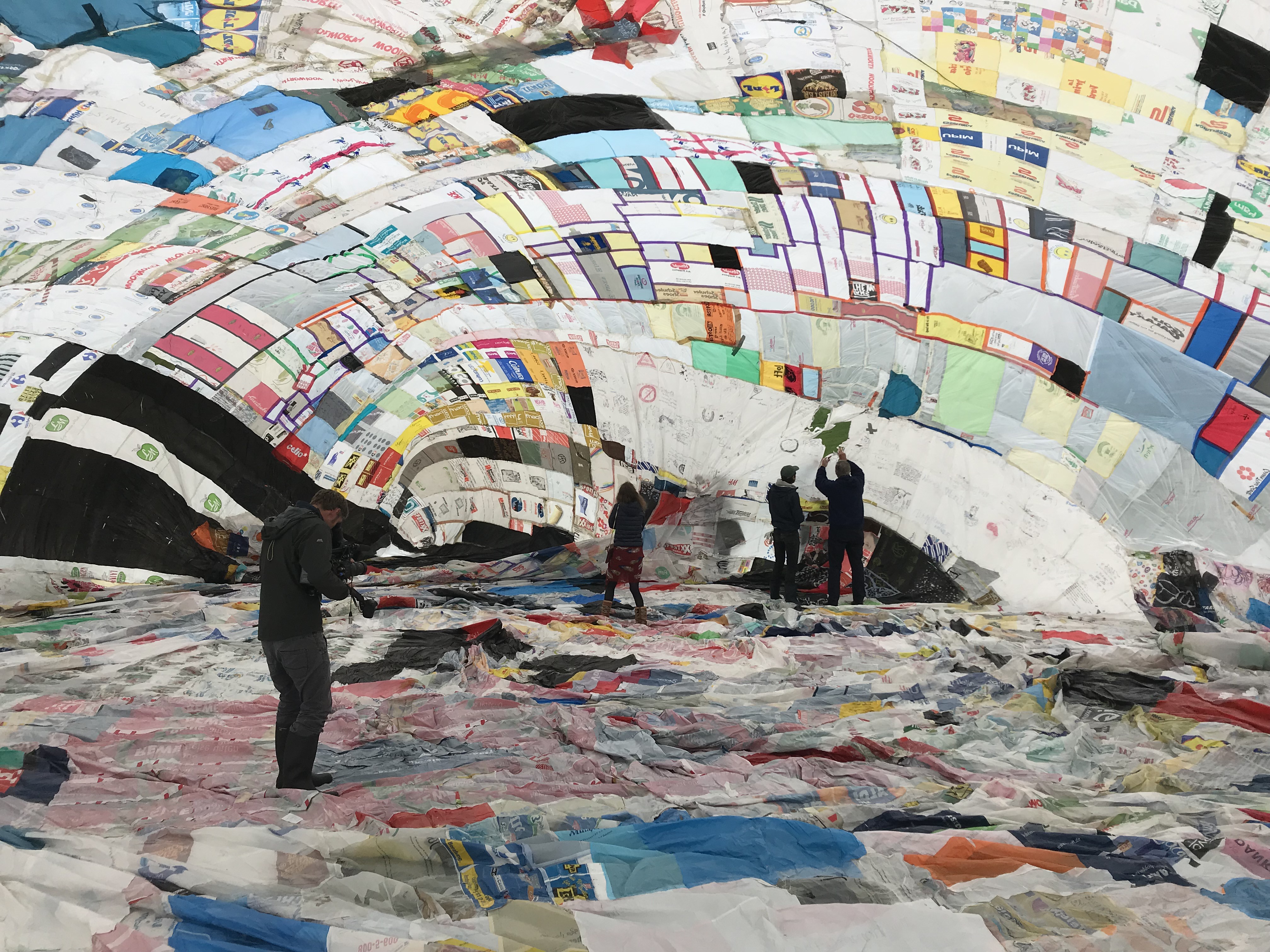Investigation work | 10 September, 2019, 5:23-19:45 GMT
Olympiapark, Munich, Germany
48°10'14.4"N 11°33'15.9"W
Olympiapark, Munich, Germany
48°10'14.4"N 11°33'15.9"W
Airborne sculptures | Plastic film, GPS tracker
2019
2019
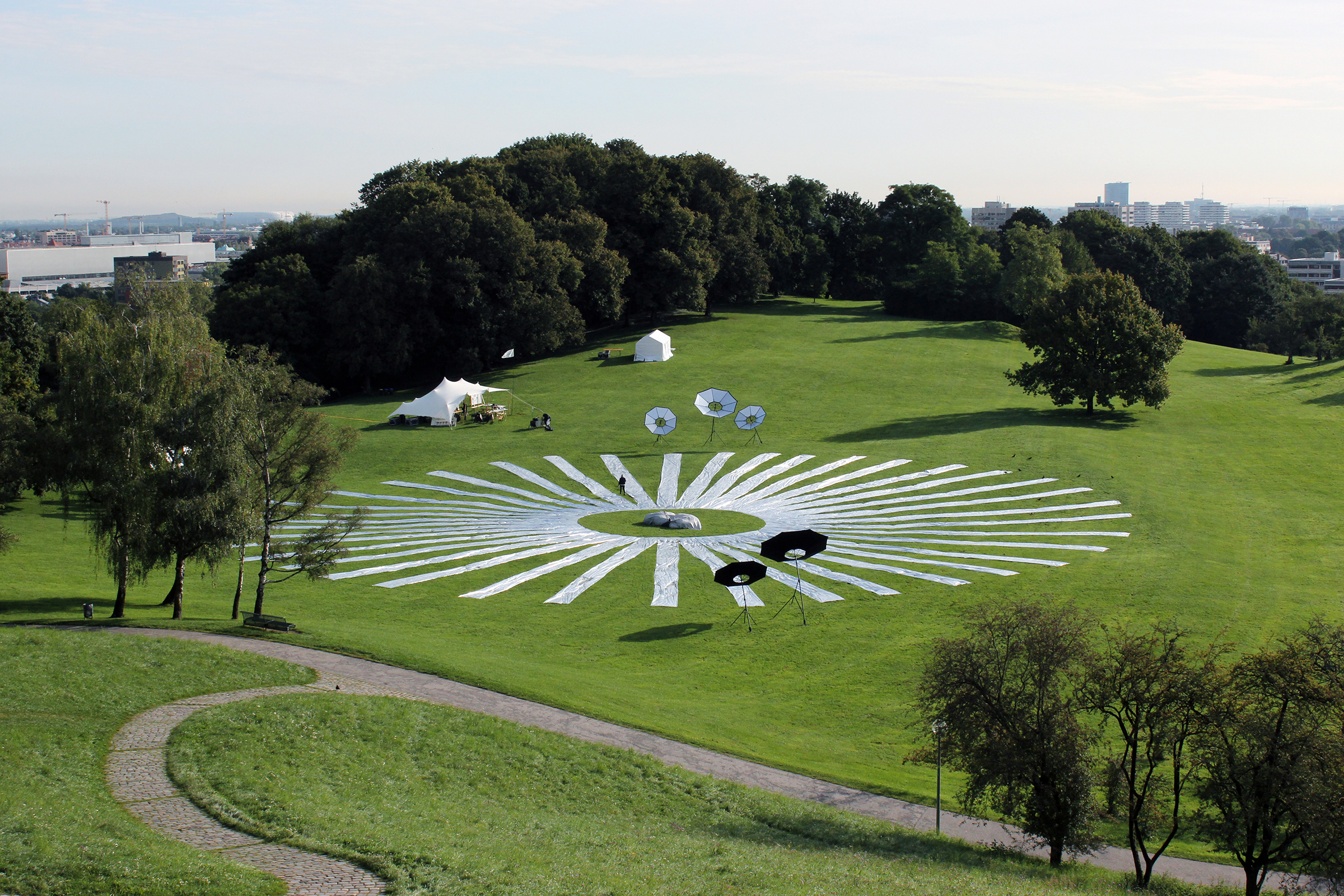
Aerocene is an open-source project initiated by Argentinian artist Tomás Saraceno. In this work, air is encapsulated within a film of black or transparent Mylar, forming airborne sculptures that drift freely on atmospheric currents. In doing so, air transitions from an invisible atmospheric element into a tangible presence within airspace. Without a predictable flight path, this encapsulated air requires specialized systems of communication, monitoring, and control to maintain its lawful navigation through regulated skies. The interplay between the fluid and solid states of air gestures toward a new mode of flight—one that transcends politically defined geographies.
After coordinating with international air traffic control, the floating structure (83AQI) was released from border restrictions. It launched from Munich, Germany, on 10 September 2019 at 05:23, travelled 247.9 miles, and descended that same evening near Sloupnice, Czech Republic, at 19:45.

